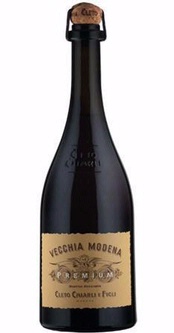|
|
 |

Cleto Chiarli, Lambrusco di Sorbara DOC “Vecchia Modena Premium,” 2011 (Dalla Terra, $15): It was decades ago, but I can still remember my first encounter with dry Lambrusco wine. I was in Italy, of course, because the U.S.  market at the time was wild about sweet Lambrusco, not the dry versions that Italians considered authentic. I was at a restaurant in the city of Modena, in the culinary mecca that is the Emilia Romagna region. The dish was cotecchino con lenticchie, moist slices of a two-inch diameter fatty pink pork sausage served atop dark, earthy lentils. The wine was fizzy, fruity and bone dry; it cut through the rich food like a cleansing tonic. I have loved dry Lambrusco since that day, and I’m pleased to see that it is finally making inroads here. market at the time was wild about sweet Lambrusco, not the dry versions that Italians considered authentic. I was at a restaurant in the city of Modena, in the culinary mecca that is the Emilia Romagna region. The dish was cotecchino con lenticchie, moist slices of a two-inch diameter fatty pink pork sausage served atop dark, earthy lentils. The wine was fizzy, fruity and bone dry; it cut through the rich food like a cleansing tonic. I have loved dry Lambrusco since that day, and I’m pleased to see that it is finally making inroads here.
The family-owned Cleto Chiarli company is a pioneer in Lambrusco land. It has produced Lambrusco for more than 150 years, since Cleto Chiarli himself witnessed the popularity of his homemade Lambrusco in his Modena restaurant. Today the family owns more than 250 acres of vineyards across the Modena province and sells about two million cases of Lambrusco annually. Despite this volume of production, the winery has earned acclaim for the quality of its wines.
The Cleto Chiarli Vecchia Modena “Premium” (a name that dates back to the 18th century) has twice earned the prestigious Tre Bicchieri rating from Italy’s Gambero Rosso organization. It is DOC Lambrusco di Sorbara, from a zone surrounding Modena to the north, and its grape is the Lambrusco known as Sorbara.
Of three Cleto Chiarli Lambrusco wines that I recently sampled side-by-side, it is the palest in color as well as the lightest in weight. Imagine the darkest rosé wine that you have ever seen, and you are close to the color of this wine, a pale ruby red. A ring of froth covers the wine when you pour it, and a few bubbles rise from the bottom of the glass; the wine’s carbon dioxide makes itself evident in your mouth also, prickling and fizzing and enlivening the wine’s fresh tart cherry and raspberry flavors and slight floral nuance. The wine is dry and very high in acidity and it has a hint of tannin as well -- these elements creating an impression of such dryness that you might be momentarily startled when you taste the wine, if it is very cold. But a nibble of cheese or a bite of salami later, and the dryness is perfect.
This wine is light in color because the maceration period when the juice and skins are in contact is only about 24 hours long. After pressing, the juice ferments in a closed tank to trap the carbon dioxide in the wine.
Another wine in the range is the 2010 Vigneto Enrico Cialdini Lambrusco ($15), also dry but much darker in color and richer in weight. It comes from the Lambrusco Grasparossa di Castelvetro DOC zone, south of the Sorbara DOC zone, and from the Grasparossa grape. This is a single-vineyard wine that’s fairly full-bodied, dry, sparkling and sports more tannin than the Vecchia Modena, along with darker fruitiness.
The third wine is the crowd-pleaser because it is amabile, slightly sweet: NV “Centenario” ($11) from the Grasparossa di Castelvetro DOC. It is flavorful with grapey and berry exuberance. The wine does have some tannin, which balances the sweetness and prevents the wine from seeming frivolous.
All three wines are worth trying, but my favorite is the Vecchia Modena because of its dryness and its extremely fresh and vibrant flavors. Do add food; it will be delicious with creamy-sauced pasta, cheesy dishes, deli platters and juicy hamburgers.
90 Points
|
 |
|